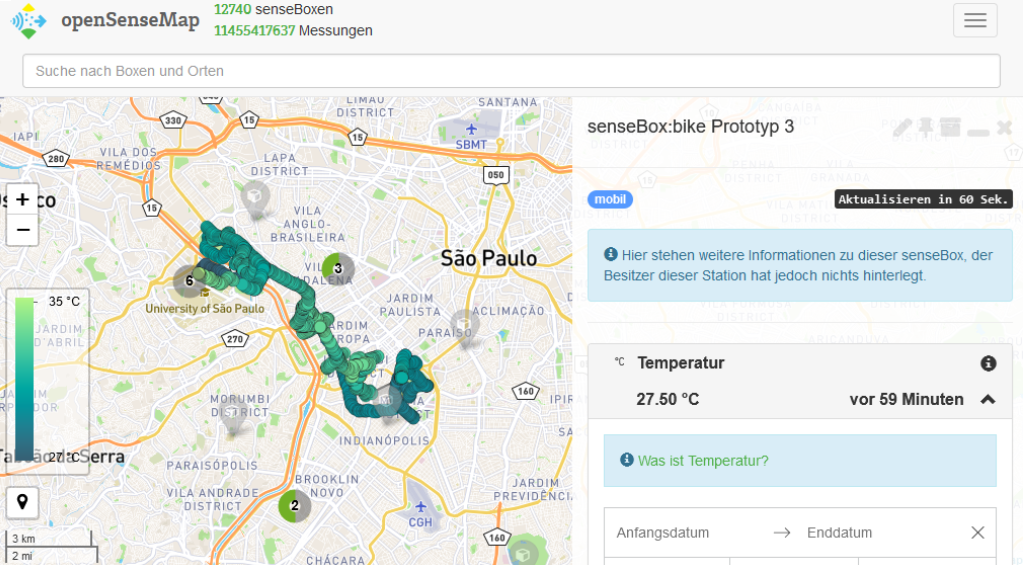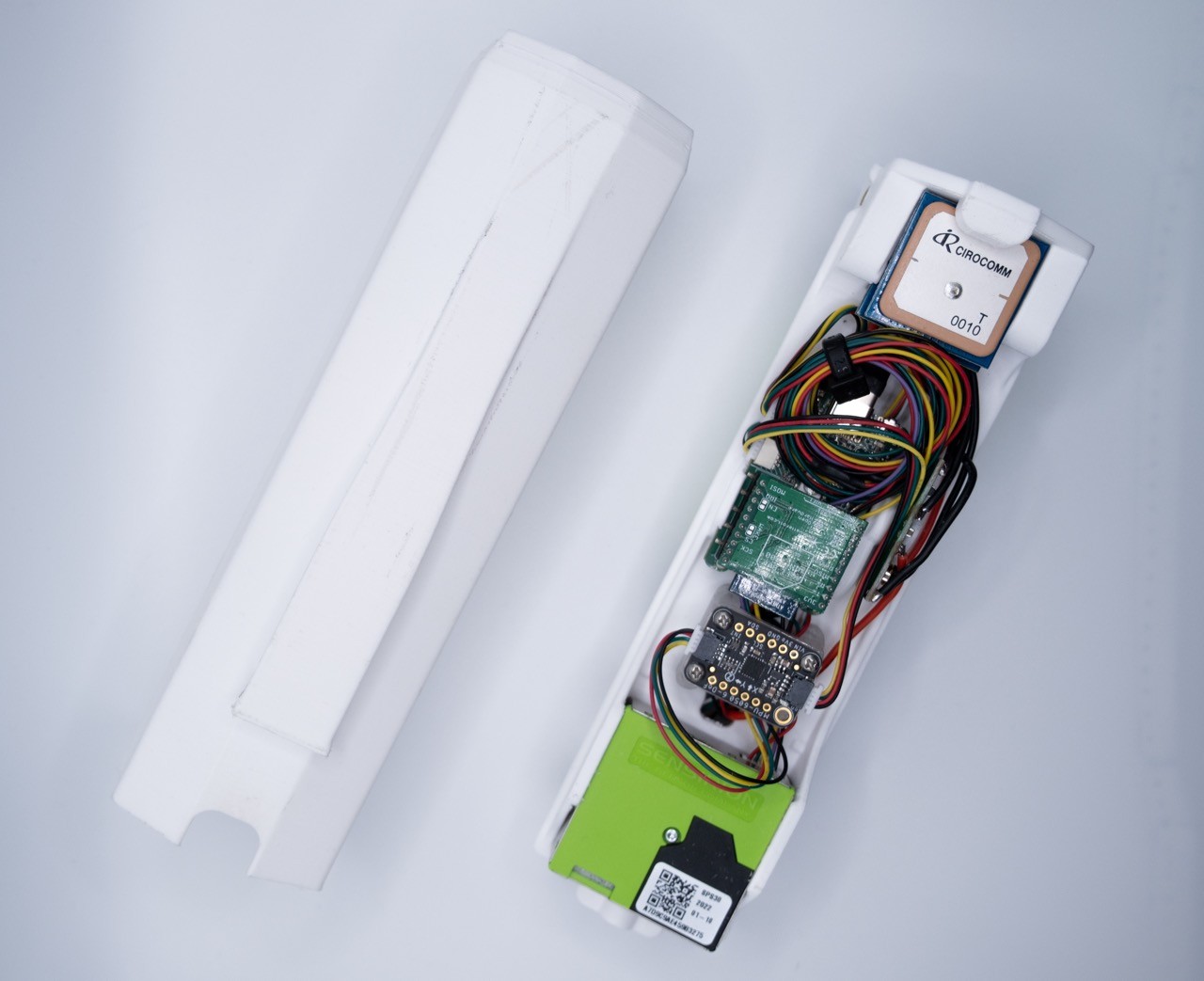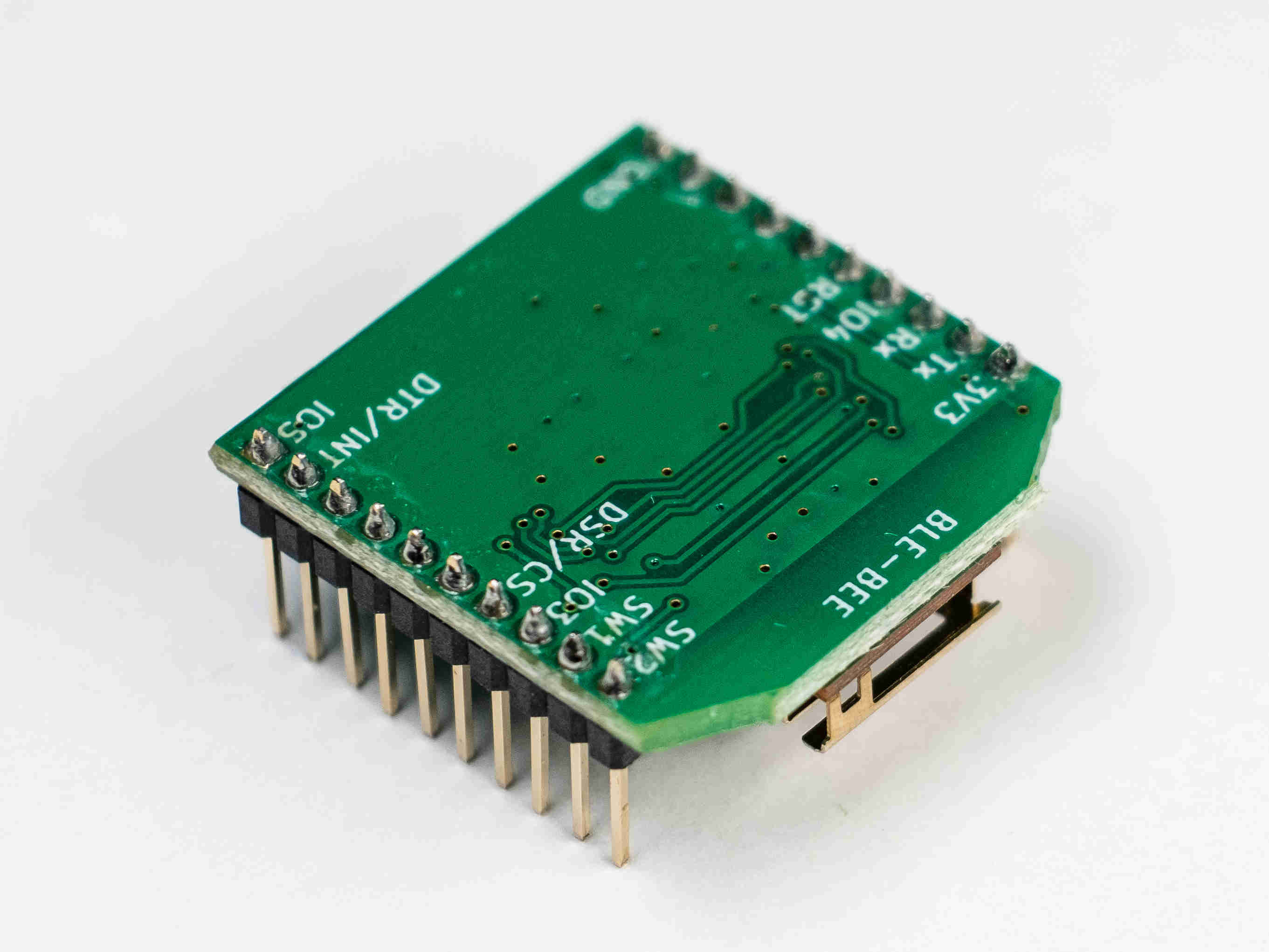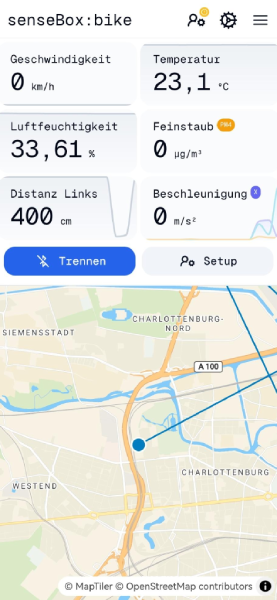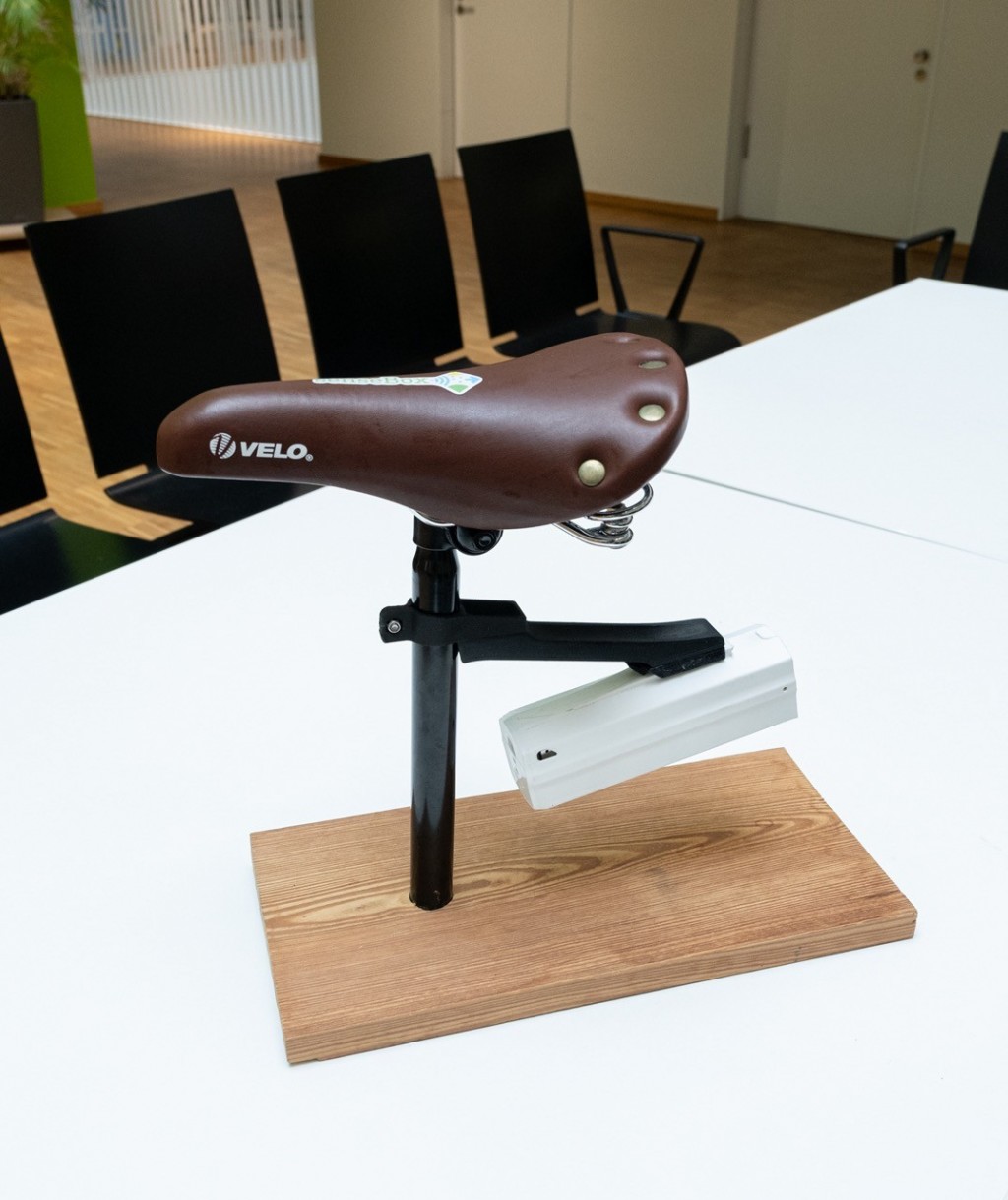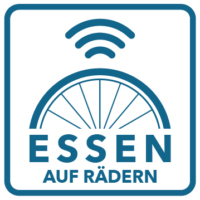senseBox:bike
The senseBox:bike expands the focus on environmental monitoring to include the component of road safety for cyclists. With a kit that can be mounted on the bicycle saddle, statements can thus be made about the condition of the cycle path, the distance between the bicycle and the car, and the speed of the cyclist. The following sensors and components are available for this purpose
